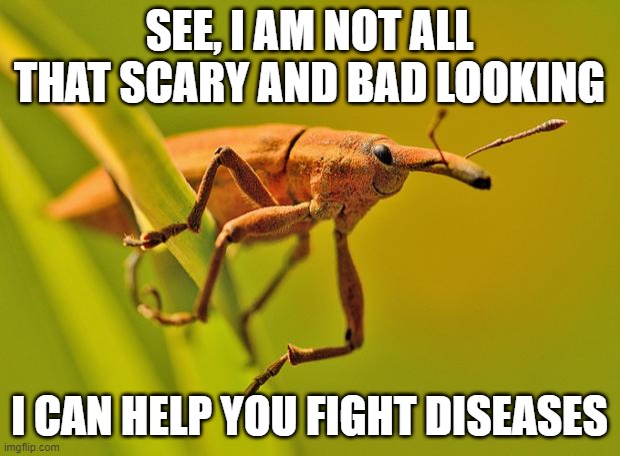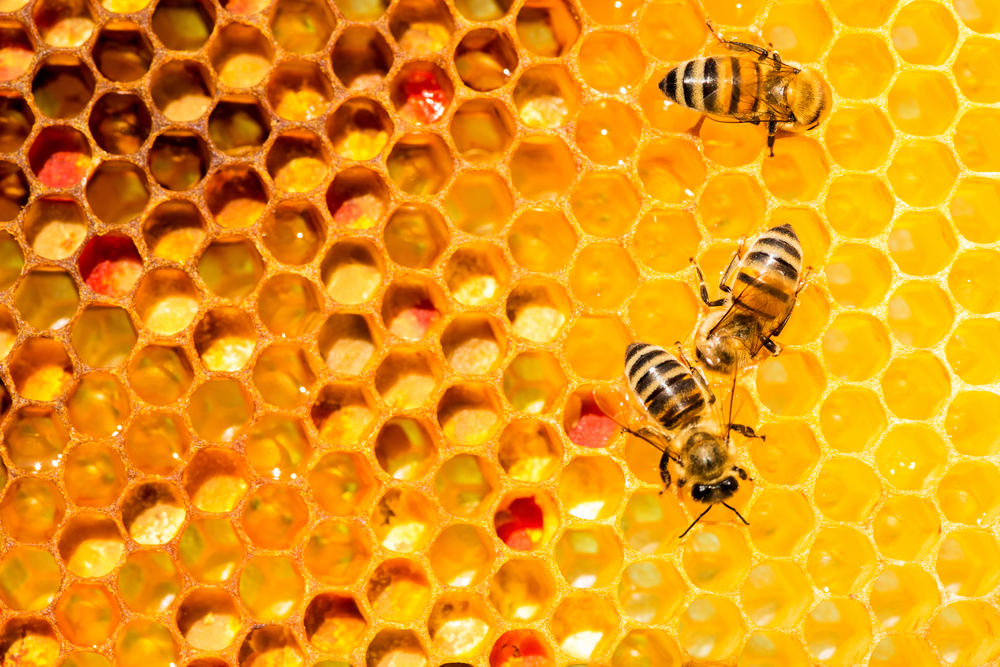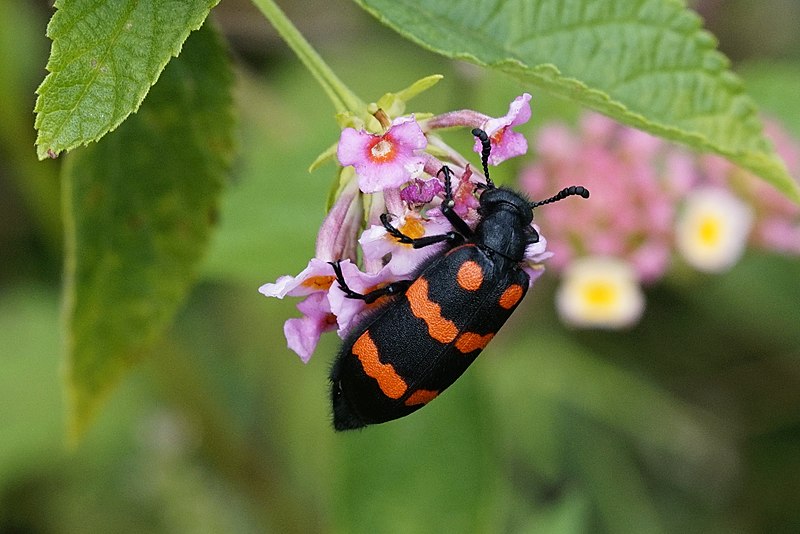Table of Contents (click to expand)
For thousands of years, humans have used the toxins and various other chemicals that bugs produce for medicine. Today, scientists have isolated specific genes and are using novel genetic modification techniques to convert these chemicals into life-saving drugs.
There are thousands of medicines available on the market today. These drugs are the result of man’s ingenuity to research and develop tools to combat disease. However, this isn’t an easy process in any way, requiring billions of dollars and decades of time.
On top of that, antibiotic resistance is reducing these drugs’ effectiveness in alarming ways. A fresh solution is needed, as is a new avenue to investigate for therapeutics. Believe it or not, bugs are one such option!
Why Bugs?
It all comes down to their lifestyle.
It is estimated that the world’s insect population is 10 quintillion! That’s 10,000,000,000,000,000,000, which is a whole lot of zeros. Insects are one of the most diverse terrestrial creatures on the planet, staying in all sorts of environments, from simple household kitchens to the dirtiest and darkest parts of underground sewers. Take dung beetles, for example; these fascinating critters love walking around and eating poop they roll into balls!
Each insect has adapted nearly perfectly to survive in this world. They have preferred habitats and are used to going about their days facing the harsh challenges that come from being so small.
One of the challenges they face is constant germ attacks. We associate germs as icky things present in very dirty environments, which is true. And we also know plenty of insects that love calling dirty environments home.
Insects have developed an efficient defense system to fight off these attacking germs: antimicrobial peptides—protein molecules that are toxic to germs.
Each environment has their own unique disease-causing microbes that they harbor. However, these bugs are very resilient. They make their own poison pills to kill these germs. With millions of bugs all around the world, the number of these defense molecules that we can harvest is huge.

Also Read: Are Insects The Future Of Food?
How Were Bugs Used In The Past?
Using bugs or their products as therapeutics isn’t a new concept. In fact, it’s something that has been done since ancient times.
Maggots
One of the best examples is the use of maggots—the soft-bodied squishy larvae of flies. Their use has been reported since the Middle Ages to treat wounds as an antiseptic agent.
Maggots would be placed on a wound, where they would secrete antibacterial compounds that would kill bacteria or they would eat them up. Additionally, they would also make enzymes that could break down dead or necrotic tissue, preventing further infection. These enzymes would also break down our skin proteins and activate them to speed up wound healing.
Bees
We’ve all seen Bee Movie and know just how important bees are to our survival and the future of the planet. Apart from pollinating flowers and maintaining the ecosystem’s delicate balance, they also make us a little something sweet: honey.
Honey has long been used to treat wounds to prevent infections, as it has antimicrobial properties. It also speeds up wound healing. Honey was even fed to people to treat stomach problems.
In ancient Egypt and China, bee venom was used to help reduce pain and inflammation in arthritis patients. Bee venom is the colorless liquid that comes out of its stinger, which it makes as a mild poison to kill its prey. The venom helped reduce joint pain in humans because it has anti-inflammatory properties.

Along with bee venom, ant venom has also been used to help reduce pain and swelling.
Beetles
Beetles produce a compound called cantharidin that could be helpful in our medical futures. Male blister beetles produce cantharidin, a toxin, to defend themselves against predators.

Dead blister beetle bodies were used in traditional Chinese and Vietnamese medicine to treat cancer and skin diseases. A more interesting use is in European and African medicine, where it was actually used as an aphrodisiac!
How Are Insects Being Used Now?
Now you have some idea of how bugs were used before the invention of modern medicine and technology, but with the modern infrastructure and knowledge that we possess today, how are we working with bugs now?
Several studies are researching the molecular properties of insect-made compounds to better understand their operation.
Their use isn’t just being targeted towards treating difficult disorders like cancer or autoimmune diseases. It can be as simple as helping someone cope with an itchy or dandruff-laden scalp.
One study found that using a 90% honey solution made with water and applying it over the scalp helped to reduce scalp itchiness.

At the other end, studies are also focusing on an interesting therapeutic called alloferons. These are insect-made proteins that possess anti-cancer and anti-viral properties, according to recent research. These proteins are made by even the simplest of insects like fruit flies.
These insects were used in medicine in the past, but we don’t completely know why they were used. With modern scientific studies, we hope to crack the code and figure out why insects and the ingredients they provide were so historically popular around the world.
Who knows, these icky critters could be a key medicinal tool in the future as well!
Also Read: Can We Use Dragonflies To Control Mosquito Populations?
A Final Word
On paper, this approach may sound simple. Find a bug, research the proteins it makes and understand its immune system to see how we can exploit it. However, estimates say that there may be as many as 30 million insect species. Of those, we have barely documented a million!
This field is fairly unexplored, so we naturally have our own limitations. Another issue are the challenges that come with producing insect-derived therapeutics. Let’s look at our previous example of alloferon. It is made from fruit flies, which are tremendously tiny. We’d need thousands, or perhaps even millions of fruit flies, to produce an amount that is suitable for sale.
Instead, by using genetic modification techniques, we can take the alloferon gene and place it in human or bacterial cells to obtain a much better yield.
Overall, the potential to find new therapeutics from the near-infinite world of bugs is vast and fascinating; more importantly, modern science is now equipped to tap into it. It’s quite possible that future medicine will be based on insects and the millions of years of secrets they hold!
How well do you understand the article above!

References (click to expand)
- Moed, L., Shwayder, T. A., & Chang, M. W. (2001, October 1). Cantharidin Revisited. Archives of Dermatology. American Medical Association (AMA).
- Blister Beetles | Entomology - University of Kentucky. The University of Kentucky
- (2010) Bugs as drugs, Part 1: Insects: the "new" alternative medicine .... The United States National Library of Medicine
- Chernysh, S., Kim, S. I., Bekker, G., Pleskach, V. A., Filatova, N. A., Anikin, V. B., … Bulet, P. (2002, September 16). Antiviral and antitumor peptides from insects. Proceedings of the National Academy of Sciences. Proceedings of the National Academy of Sciences.
- Feng, M., Fei, S., Xia, J., Labropoulou, V., Swevers, L., & Sun, J. (2020, September 2). Antimicrobial Peptides as Potential Antiviral Factors in Insect Antiviral Immune Response. Frontiers in Immunology. Frontiers Media SA.
- Medicinal uses and health benefits of Honey: An Overview - renevanmaarsseveen.nl
